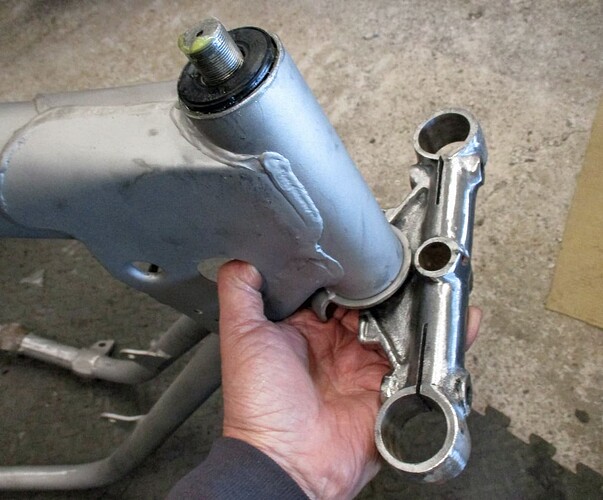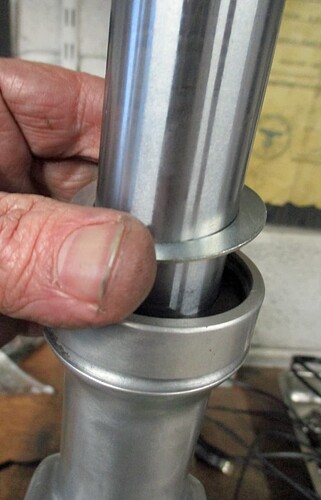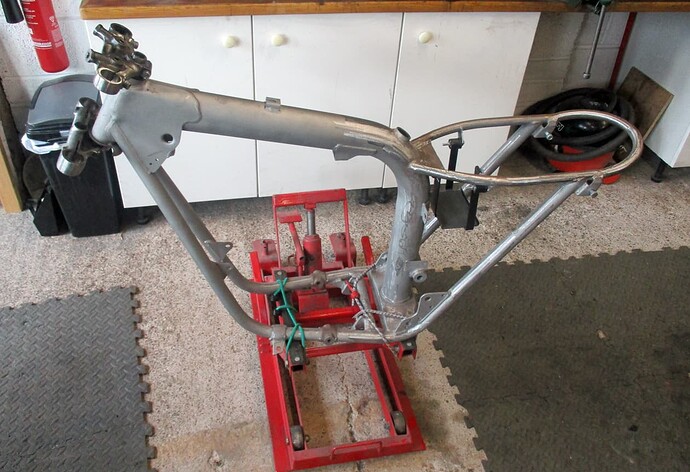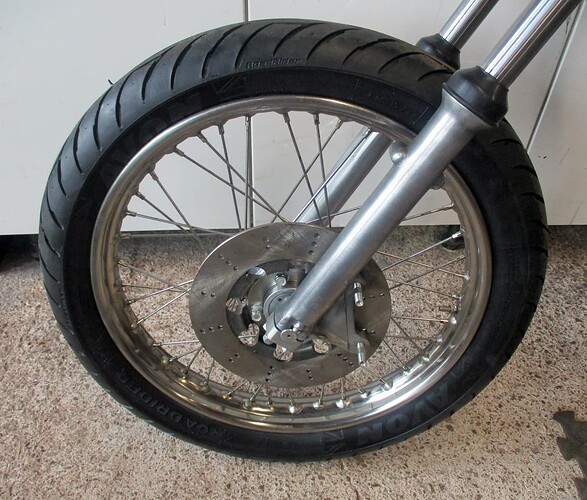The less paid for the project bike, the greater the pile of spares required. But as labour is free the overall cost, purely in pound notes, is less.
Swings and roudabouts I suppose ![]()
New discs required I think
Onto the back wheel. Find the correct positioning of the spokes holes and temporarily bolt up. New bits and bobs for the disc side. Took a while to figure out the correct pieces as this has 1985 parts according to the parts catalogue.
Sometimes the parts catalogues can be quite misleading as a PO may have worked on the bike and mixed bits up from differing models and years. A set of all years model parts books is well handy for trying to figure things out.
Press the bearing on in the vice…
use a suitable drift to knock it on the rest of the way
listen for a change in tone when bashing to tell that it’s seated.
Assemble all as shown in the parts catalogue. Careful when bashing in the bearing onto the dust cover as it’s too easy to break the ally stop off inside the hub. Keep looking to ensure the dust cover isn’t going to rattle.
Nip up the left hand thread locking ring. No need to overdo it.
Long spacer goes in the other side and assemble the rest
Lastly push in the dust cover.
Then onto the wheel building.
Slightly different than the front as the rim’s centreline is pushed to the right of the hub so that the chain doesn’t rub on the tyre.
So to enable this the spokes are bent slightly differently and are different lengths. Dealers should supply the spokes as a set and clearly labelled.
Typically, mine were not as there was limited availability when I wanted them so it took a bit of fiddling and farting about to sort.
Build the spokes in exactly the same way as the front wheel above. Ensure the outer spokes now point in the direction of rotation so the massive acceleration forces from the mighty T140 engine are suitably provided for.
The stand has to be adjusted and it’s spindle can be used this time as there’s no axle through the wheel.





























































































